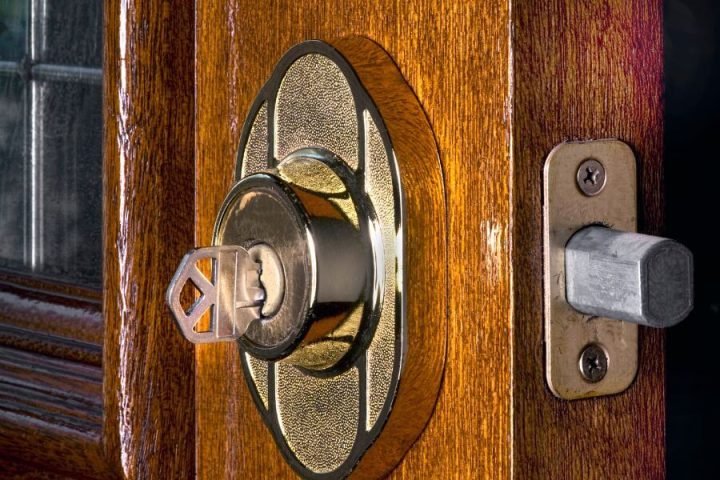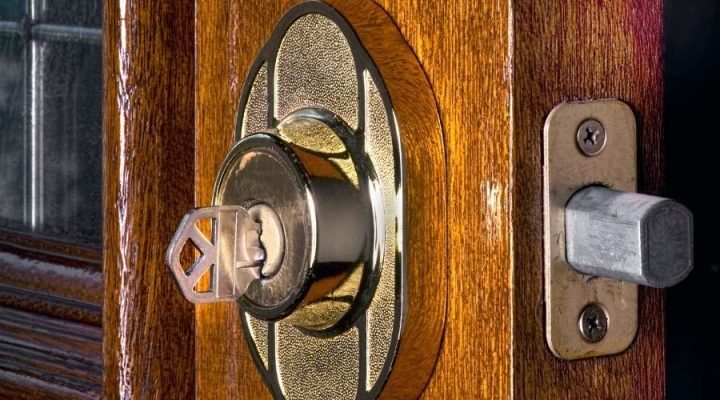
Honestly, troubleshooting this weird deadbolt quirk can feel like decoding a secret handshake, especially if you don’t know what’s causing it. Whether your lock is a Schlage, Kwikset, Defiant, Yale, or even a “brandless” model from the hardware store, the issue almost always comes down to the way your door and frame line up. Let me explain why this happens, how you can fix it, and what to watch out for if you want your deadbolt to work as smoothly as day one.
What’s Actually Happening When You Jiggle the Door?
Here’s the thing: deadbolts are pretty simple. You turn a key or thumbturn, and a solid metal bolt slides out into the “strike plate”—that metal bit on the door frame. But for this to work, the bolt and the hole in the frame have to line up perfectly. If they’re off by even a couple of millimeters, the bolt can’t move freely. This is when you find yourself nudging the door upward (or downward, sometimes!) just to get the lock to catch.
You might be wondering why vertical jiggling helps. Well, pushing the door up or down shifts the misaligned parts for a split second, letting the bolt slip into place. It’s like trying to fit a puzzle piece that’s a bit too snug—tilt it just right, and suddenly it slides in. But you shouldn’t have to be an acrobat just to lock up.
This problem is basically the lock’s way of telling you something isn’t lined up behind the scenes. The solution isn’t to keep muscling the deadbolt—over time, that’ll just chew up the internal parts or the door frame. What you want is a lock that glides smoothly every time, without any weird tricks.
Why Does My Deadbolt Only Work When The Door Is Jiggled Vertically?
If your deadbolt only works with a vertical jiggle, the main culprit is strike misalignment caused by shifting doors or frames. Doors are constantly fighting against gravity, humidity, temperature changes, and the general wear and tear of daily use. Maybe your house has settled a little bit, causing the frame to drop a fraction of an inch, or maybe the hinges have loosened up over time.
Here’s what’s likely happening:
- The door has sagged slightly, so the bolt and strike plate don’t match up.
- The hinges are loose or worn out, letting the door droop just enough to mess up the alignment.
- Seasonal swelling or shrinking of wooden doors can change the fit, especially if your door sticks more in summer or winter.
You might even notice that other things are off too—the door scrapes the floor, the weatherstripping looks squished, or you have to push hard just to close the door. All of these are clues that the alignment’s off and probably the real reason your deadbolt resists locking until you give it that vertical jiggle.
How a Deadbolt Should Work When Everything’s Lined Up
Let’s break down what’s supposed to happen. When your deadbolt is installed right and the door frame hasn’t moved, turning the key (or twisting the thumbturn) smoothly slides the bolt out, and it shoots straight into the strike plate hole. No effort, no wiggling, no second thoughts.
Here’s what you should see and feel:
- Minimal resistance: The bolt glides in and out with almost zero effort, even if you just use two fingers.
- No noise: You shouldn’t hear scraping, grinding, or squeaking.
- No need to push or pull: The door should stay still—the bolt should do all the work.
If your lock was ever this smooth but now isn’t, chances are something’s shifted with time. Knowing what “normal” feels like is the best way to spot trouble fast.
Top Reasons Deadbolts Get Out of Alignment
Over the years, I’ve seen (and struggled with) more than one cranky deadbolt. Here are the main reasons your lock might demand a vertical jiggle:
- Loose hinges: Hinges get wobbly with use. Even a tiny bit of slack makes the door sag, so the bolt and plate don’t line up.
- Frame or jamb shifting: Houses settle. Wood expands and shrinks with seasons. Sometimes, even a new door installation wasn’t quite perfect to begin with.
- Strike plate moved: Over time, screws can loosen or holes can widen, letting the strike plate shift just enough to mess things up.
- Poor install or replacement: If someone swapped a lock or door without properly measuring or drilling, you can get mismatched parts right off the bat.
Don’t overlook the simple stuff, either. If you recently painted the door or frame, a bit of buildup around the bolt or plate might be stopping things from lining up smoothly.
Quick DIY Fixes for a Stubborn Deadbolt
You don’t have to be a locksmith to fix this problem—just a little patience and basic tools. Here’s how to start troubleshooting a deadbolt that only works when jiggled vertically:
1. Check the Hinges: Open the door wide and inspect the hinges. Try tightening any loose screws. If the holes are stripped, swap in longer screws or use some wood filler for a snug fit.
2. Look for Door Sag: With the door open, see if it’s hanging crooked or scraping any part of the frame or ground. If it sags, lifting the handle while locking is a sure sign.
3. Inspect the Strike Plate: With the door closed, look at where the bolt enters the frame. The bolt should center in the hole. If it doesn’t, that’s your clue.
4. Test the Deadbolt With the Door Open: If the deadbolt turns smoothly when the door’s open, but not closed, alignment is the problem—not the lock.
If you spot alignment issues, you can carefully adjust the strike plate (move it up or down a bit), tighten the hinges, or even chisel the hole a little larger—but always go slow and check your work as you go.
When It’s Time to Call a Locksmith
Sometimes, you just can’t get the deadbolt to work right, no matter how much you fiddle. If you’re dealing with an old wooden door that’s warped, a metal frame that’s bent, or a lock that’s clearly worn out, it’s probably time to call in a pro. Locksmiths have specialized tools for checking alignment and can often spot issues you’d miss.
Here’s when to give up the DIY:
- You’ve tightened everything and the lock still sticks.
- The lock feels gritty, or the key won’t turn even with the door open.
- You notice a lot of play (movement) in the door or frame that makes fixes impossible.
A good locksmith can reset, repair, or even replace the deadbolt so you’re not stuck with a lock that only works when the planets align.
Upgrading or Replacing Your Deadbolt: Things to Consider
If you’re sick of fighting with your deadbolt, it might be time to upgrade—especially if it’s older or flimsy. Modern deadbolts from brands like Schlage, Kwikset, Yale, and Defiant are designed to be more forgiving of minor alignment issues and often come with adjustable strike plates.
Here’s what to look for in a replacement:
- Adjustable bolts: Some models let you fine-tune the fit, making alignment easier.
- Heavy-duty construction: Look for solid metal parts and strong screws.
- Smart features: If you want to add keypads, remote operation, or app control, now’s your chance to upgrade.
Universal deadbolts can fit a wide range of doors, while brand-specific locks (like Schlage or Kwikset) are built for their own systems. If you aren’t sure what will fit, it never hurts to bring a photo or measurements to your hardware store or locksmith.
How to Prevent Alignment Issues in the Future
Let’s be honest—most of us never think about our deadbolts until they act up. But a little prevention can save you a lot of hassle (and arm workouts).
Here are some easy habits to keep your deadbolt happy:
- Tighten hinge screws every few months. Don’t wait for things to get wobbly.
- Avoid slamming the door, which can knock things out of alignment over time.
- Keep paint and debris clear from the bolt and strike plate.
- Watch for door sticking, because that’s usually a sign something’s off somewhere in the frame.
If you have a smart lock or remote-operated deadbolt, follow the same rules—and watch those batteries. Sometimes a low battery can make the lock act up in weird ways, though that’s a different issue than physical alignment.
Closing Thoughts
A deadbolt that only works when the door is jiggled vertically isn’t just a minor annoyance—it’s your home’s way of saying, “Hey, something’s off here!” With a little patience and a close look at your door, hinges, and frame, you can usually fix this without special skills. And if all else fails, calling a locksmith or upgrading your deadbolt gets you back to stress-free locking. After all, a secure, smooth-working deadbolt is one of those little home comforts you shouldn’t have to think twice about.
